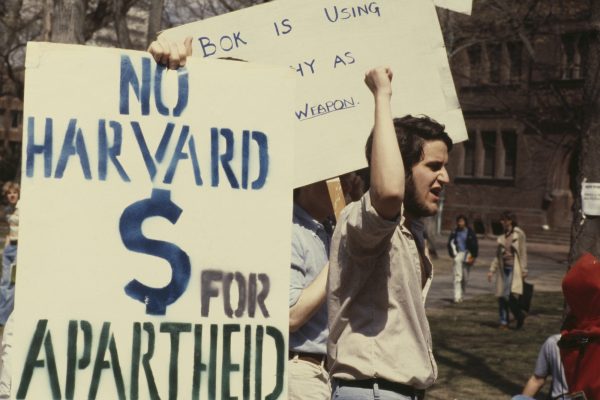Editors’ Note: This forum is featured in our spring 2023 issue. Order a copy here.
Christine Sypnowich presents several telling criticisms of some recent trends in thinking about social justice within liberal political theory. I agree that a one-eyed and exclusive focus on equality of opportunity can lead to a distorted and impoverished viewpoint that loses touch with the real core of equality. But I am unconvinced that all or even most liberal egalitarian views fall within the purview of her criticisms, and I think that she greatly underestimates the radical potential of liberal egalitarianism as a philosophical tradition—and in particular, of the frequently undervalued Rawlsian idea of fair equality of opportunity.
Sypnowich’s arguments are very effective against luck egalitarian views, which put questionable conceptions of choice and responsibility at the center of a rather narrow and moralistic conception of distributive justice. But these criticisms do not apply to her broader targets; Rawls, for example, was not a luck egalitarian avant la lettre. Sypnowich is too quick to tar liberal egalitarians in general with the brush used against luck egalitarians in particular.
Take the claim that “liberal egalitarianism falls short of a truly egalitarian theory because its preoccupation with opportunity and freedom of choice leads it to forsake the relations of community at the heart of the equality ideal.” This criticism hits home only against a dwindling minority of liberal egalitarian views: those developed in the 1980s in the wake of Ronald Dworkin’s account of “equality of resources.” In two highly influential articles both published in 1989, G. A. Cohen and Richard Arneson presented closely related versions of luck egalitarianism that, starting from Dworkin’s position, developed a starker and simpler view that aimed to put the distinction between choice and circumstance at the center of egalitarian thinking. Both emphasized individual responsibility as a kind of obverse complement to egalitarian concerns, marking out a territory of individual freedom that egalitarians should seek to protect, and looking to create a kind of zone of individual consequences with which egalitarian policy interventions should avoid intervening. Cohen called his view “equality of access to advantage,” while Arneson called his “equality of opportunity for welfare,” but their differences were dwarfed by their similarities.
Luck egalitarianism was philosophically influential, at least initially, in part because its emphasis on the connection of distributive justice to ideas of choice, responsibility, and individual freedom created philosophical puzzles of considerable interest and complexity. But this view has been in abeyance, at least among political philosophers, during the last quarter century. Among those whose work has helped to save liberal egalitarianism from the cul-de-sac of luck egalitarianism—and who have sought to deepen the public discussion of equality, in part through the pages of this magazine—are T. M. Scanlon, Elizabeth Anderson, Samuel Scheffler, Debra Satz, Stuart White, and Joshua Cohen. As a result, the leading philosophical versions of liberal egalitarianism today are quite different: so-called “social” or “relational” egalitarians view equality as a matter, first and foremost, of relating to each other as equals, not as an arithmetical matter of achieving—or setting up equal opportunities to achieve—an equal level of material resources, welfare, or some other distributive metric. Social egalitarian ideas can stand behind an ambitious form of liberal egalitarianism that might endorse, for example, the socialized provision of child care and lifelong education, or policies of local economic development that look to expand the cooperative sector and democratize the economy.
Does this mean that we should throw out equality of opportunity along with luck egalitarianism? Far from it. When given an appropriate scope and role (rather than taken to constitute a complete account of the demands of justice), the idea is attractive, combining an uncontroversial outward appearance with a surprising degree of hidden radicalism.
Take Rawls’s idea of fair equality of opportunity (FEO), which is the first part of Rawls’s second principle of justice. (The second part is his much better known—and more widely discussed—“difference principle.”) According to FEO, access to different jobs and to positions of power and responsibility within the economy should be distributed in a way that, to the extent institutionally possible, eradicates the influence of background social conditions. A society that realizes FEO is one that strives through a broad range of fiscal and social policies to ensure that the likelihood that any individual occupies any particular job or social position—from the most powerful and prestigious to the least—should be entirely divorced from their race, gender, sexual orientation, and social and family background. When we endorse FEO, we are endorsing a commitment that amounts to nothing less than the idea of the abolition of social class, at least when seen as a feature that structures life chances from one generation to the next. This is hardly a minimalist commitment, and it gives a standard for assessing economic justice that contemporary societies such as the United States and the United Kingdom, for example, conspicuously fail to meet.
Sypnowich acknowledges that FEO goes well beyond mere nondiscrimination, yet she nevertheless portrays it as far too complacent regarding actually existing inequality. This seems to me a mistake, especially when one thinks about the kinds of policies that would be justified by FEO. Given that unequal material outcomes in one generation can translate into unfair opportunities in the next generation, the ideal of equal opportunity is far from weak or inert. Rawls himself endorsed aggressive forms of inheritance taxation and capital transfer taxation as one way to make sure that unfair inequalities of opportunity were not transferred from one generation to the next. (This was one important element of his idea of a “property-owning democracy.”) For related reasons, Rawls also advocated designing an educational system that actively counteracts existing social inequalities. Such an approach would take us very far from the existing realities of U.S. and U.K. education systems and toward the well-funded, universalist, and egalitarian systems in countries such as Finland. In short, taking FEO seriously means embracing a transformative egalitarian agenda that touches upon a wide range of policy areas.
For Rawls, of course, FEO was only one element of a richer and more complex account of the demands of justice; other views of the role of equal opportunity within liberal egalitarianism are possible. Sypnowich’s socialist egalitarianism may have other grounds for rejecting its liberal counterpart, but it should not be too quick to downplay the power of equal opportunity, or to miss out on the potential of liberal egalitarianism as a broader body of thought to advance compelling justifications for institutions and policies that radical egalitarians should find politically attractive.
We’re interested in what you think. Submit a letter to the editors at letters@bostonreview.net. Boston Review is nonprofit, paywall-free, and reader-funded. To support work like this, please donate here.








